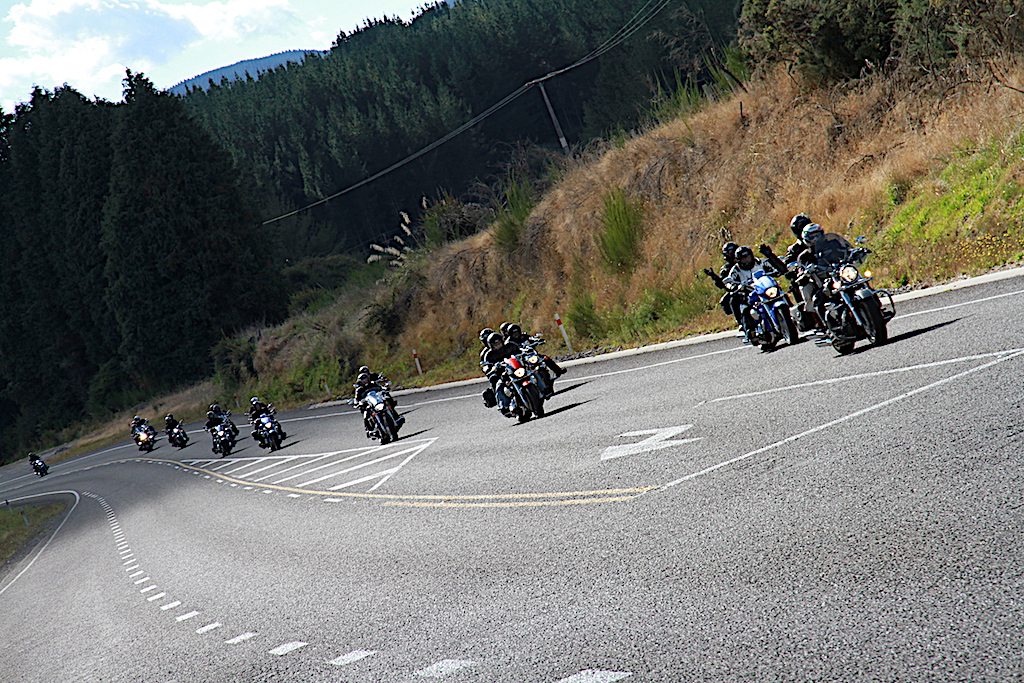It never ceases to amaze, how simple decisions on the road can make or break a ride. For the second part of our ‘Road Craft’ series, we’ve retraced our steps into the archives and found a great piece written by Howard from Prorider, focusing on how to improve your safety and enjoyment on group rides…
Riding with your mates or as part of a group is a unique experience. It is a wonderful thing to travel together, to watch the line of bikes flowing along ahead of you, to feel the camaraderie, to hear the thunder of the exhausts, its great! Unfortunately, there are big problems that can occur from this for the rider at the front of the group if the ride isn’t thought through.
Let’s start with a group of ten bikes. You form up behind the ride leader and move out as a group onto the motorway. The leader (No1) leads out slowly and lets everyone form up nicely into a staggered group. Everyone has settled down to a nice rate of about 100km/h and you are staying as a group in the outside lane, working with the traffic, waving at the kiddies in the backs of cars and smiling at the odd driver who obviously would rather be riding than driving.
But, you are about to get off the motorway and here’s where things change.
Almost immediately you come up behind a slow-moving truck (Rolling Road Block). The Ride leader and No2 judge that they can pass on a short straight so they head off and after the pass they continue on at 100km/h, No3 sees them heading off so he judges that he can get around on a corner and No4 follows him, they make it and head off a little quicker to catch No1 and No2. Meantime No5 and No6 get through on a straight and find they need to go at about 120km/h to catch up, while Nos 7 to 10 end up screaming past on double yellow lines at about 140km/h or faster to catch the tail.
Unfortunately, by the time the last riders catch up, No1, 2 and 3 have gone through the next rolling road-block and the cycle starts all over again as the whole deal gets out of hand.
Everyone is so focused on trying to keep together as a group, that thoughts of road rules, consideration for other road users, speeding tickets and (very importantly) the perception of bike riders in the minds of other drivers, have taken the back seat as riders are screaming past cars at ballistic speed, passing on blind corners, double yellows etc just to keep up with the group. The drivers who would have smiled at us just minutes ago are now shaking their fists, the cute little kiddies are hiding under their seats and no one is happy, except perhaps No1 and 2 who are just cruising along at the same old 100km/h out front, totally oblivious to the scene behind them.
No sensible risk-averse person would consider this a reasonable situation with today’s traffic and in today’s climate of policing. We need to be willing to accept the natural order of things and not fight against it.
In a group ride on a two-way road these things will happen:
- We will encounter slow traffic,
- We will want to pass,
- We will be broken into small groups by this.
If we all try to get back together someone will most likely have to do something dangerous.
Here’s the solution:
You need to accept the fact that you will be broken up into small groups and become pro-active as a group of five can normally stay together fairly well without getting into too much trouble.
At the start of a ride, the leader calls for the group to split into groups of five – this can be done on the engine capacity of the bikes and/or experience of riders.
Each group nominates one group leader and he or she will make absolutely sure throughout the day that they know where the next stop will be. The groups head out with two-minute intervals, knowing that they will all meet up at the next stop.
The groups do not attempt to catch up with the other groups, simply travel at reasonable speed and get back to enjoying the experience of riding with friends and looking forward to a nice coffee and a chat at the next stop.
We are referring to point-to-point travel on main roads, there are other situations where the above would not be appropriate, like if the ride is going to travel through back roads, then there is a real danger of groups getting lost. In this situation the No1 Ride Leader would stop and wait for all the groups to arrive and switch into large group riding with riders waiting at change of direction points to keep everyone on track.
Is keeping together really so important that someone gets a fine, gets hurt or dies? No – of course not, so we need to modify our riding protocol to reduce that risk so we can continue to enjoy riding with our mates!
















